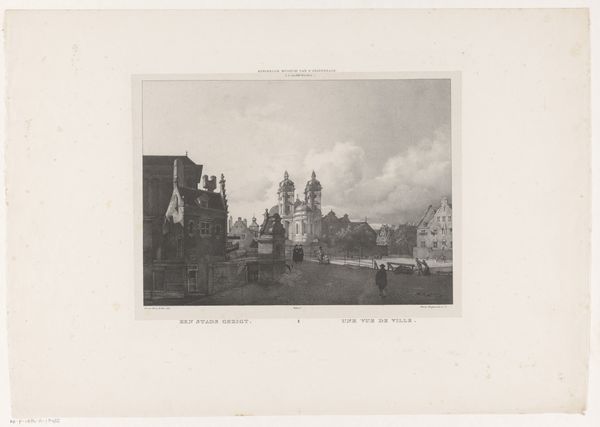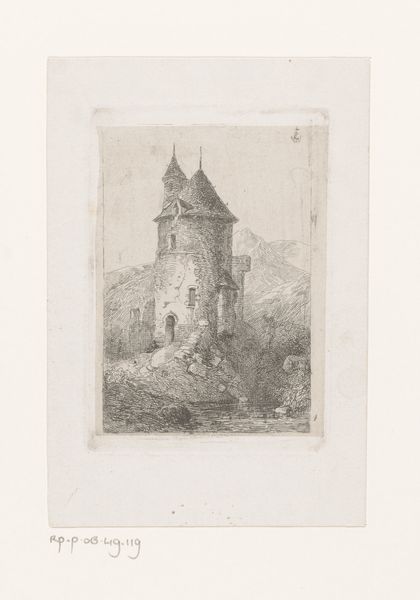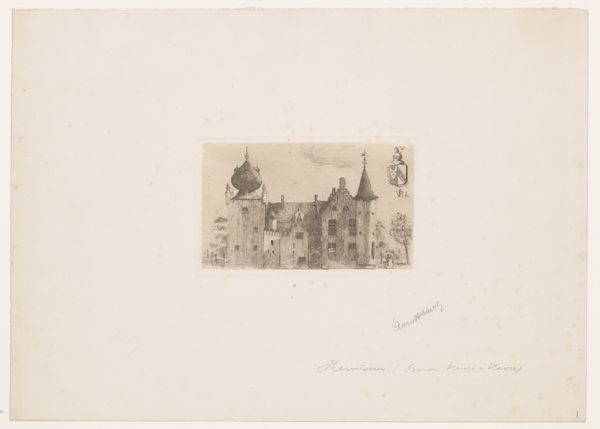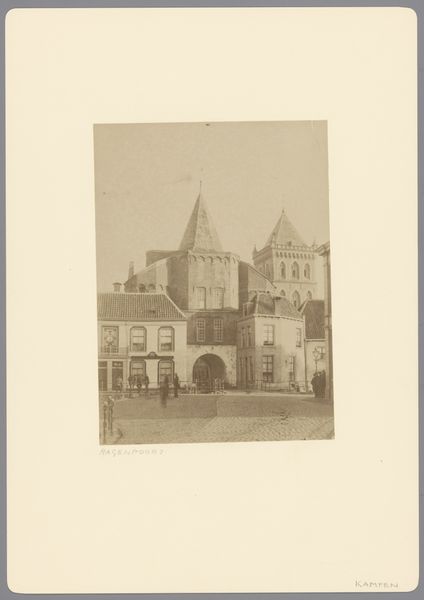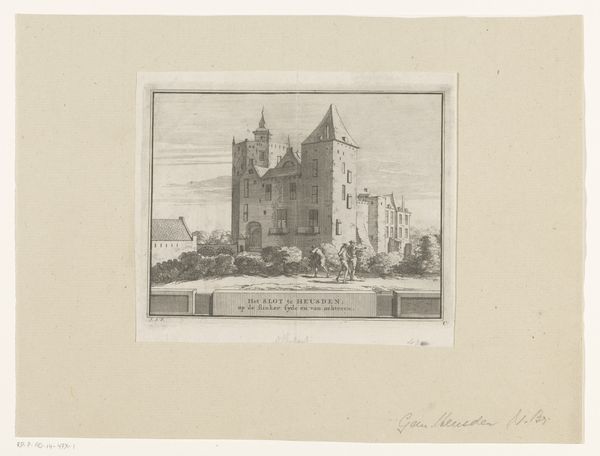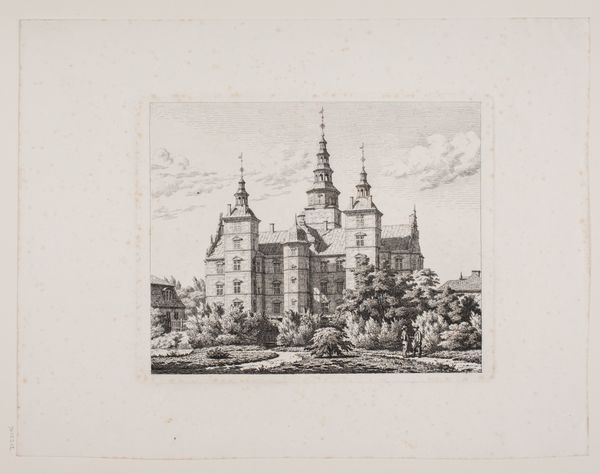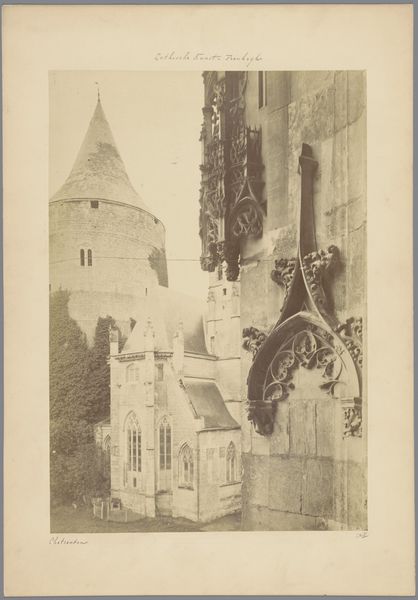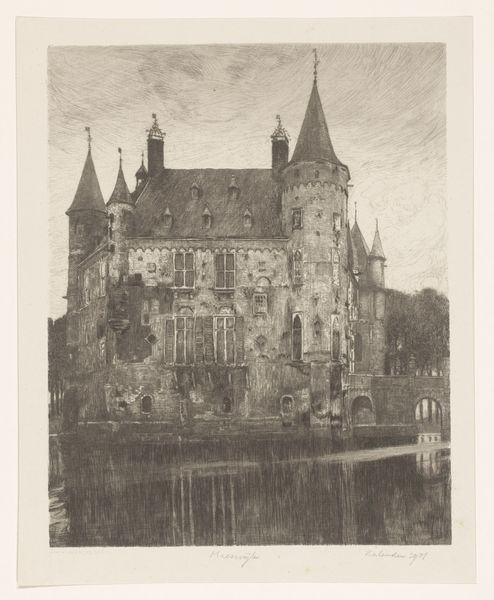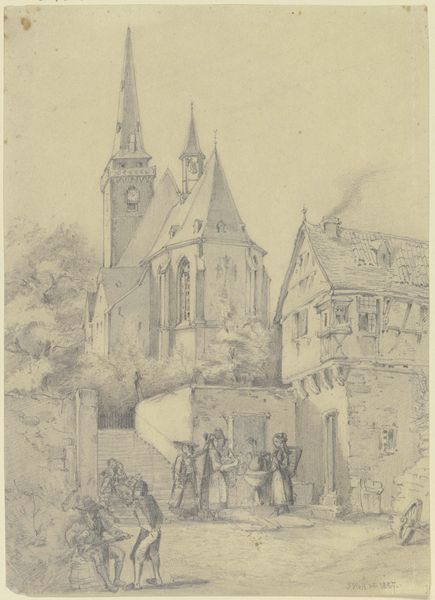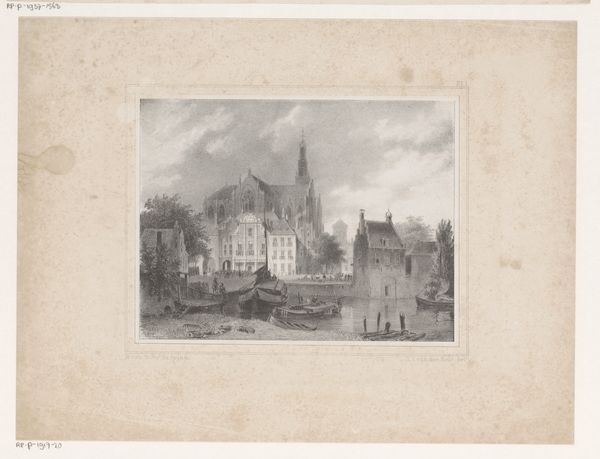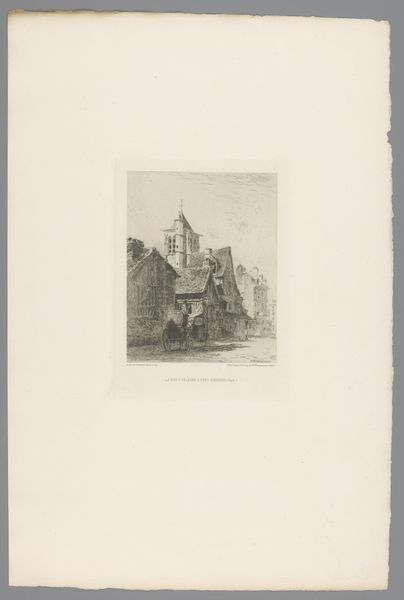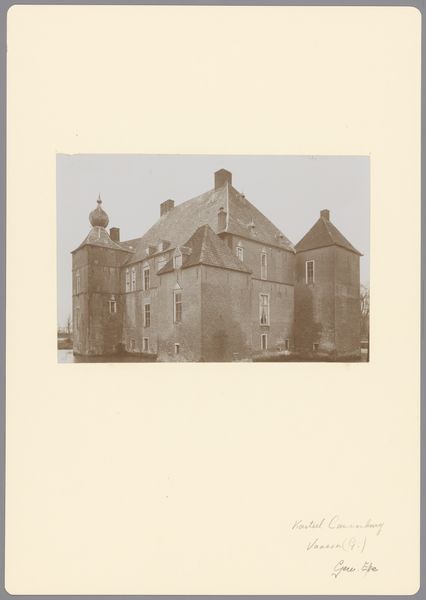
print, engraving
# print
#
landscape
#
romanticism
#
cityscape
#
engraving
Dimensions: height 554 mm, width 360 mm
Copyright: Rijks Museum: Open Domain
Paulus Lauters created this view of Bouvignes using lithography, a printmaking process that relies on the chemical repulsion between oil and water. A design is drawn on a stone or metal plate with a greasy medium, then treated with acid. Ink adheres to the greasy areas, and the image is transferred to paper through pressure. Lauters would have needed a steady hand and deep understanding of the medium to capture the intricate details of the town's architecture and the textures of daily life. Lithography emerged in the 19th century as a relatively affordable way to reproduce images, playing a crucial role in disseminating visual information and shaping public perception of places and events. The production of prints like these involved a division of labor, with specialized artisans handling different stages of the process. This print not only reflects Lauters' artistic skill but also the social and economic context of 19th-century printmaking. Understanding the materials and processes behind this artwork helps us appreciate the broader cultural landscape in which it was created.
Comments
No comments
Be the first to comment and join the conversation on the ultimate creative platform.
